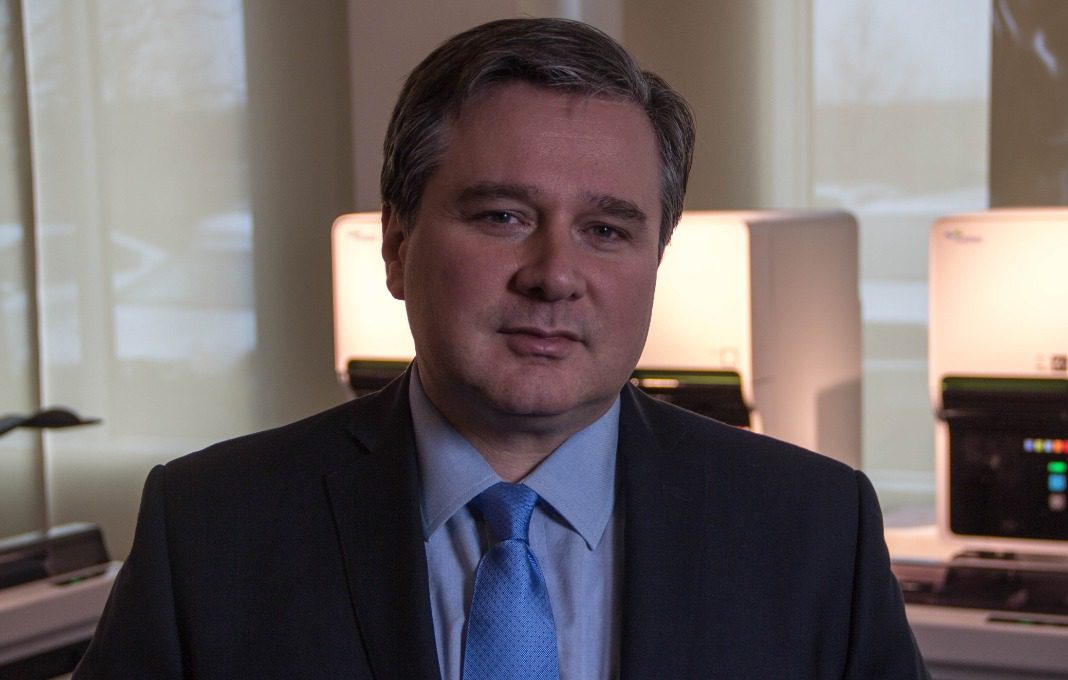
When employees leave the Sysmex America warehouse for the night in Buffalo Grove, Ill., a drone may soon take over and patrol from 11 p.m. to 5 a.m. as part of the company’s efforts to test a new approach to inventory management.
“The drone keeps flying around the warehouse and counting the items while you’re at home sleeping,” said Alex Garini, CFO of the subsidiary of Sysmex Corp., a Japanese-based healthcare product and services company specializing in clinical laboratory diagnostics such as hematology and flow cytometry technology.
The drones are just one example of how Garini is looking for new ideas to simplify operations. He talked with StrategicCFO360 about adopting time-saving software systems and technology, increasing communication and maintaining a focus on cash.
What strategies have been most effective for you as CFO in guiding the company through the pandemic while focusing on growth?
The main focus we have not only as a company but as part of society is to keep the flow of products going to the markets, i.e., hospitals. We serve a big chunk of the hospitals in North America, so we do every possible planning to make sure we have the proper supply chain, the proper manufacturing operations, the proper service engineers to serve our customers. And we are doing everything to make sure firstly, our associates are safe.
A big chunk—40%—of the company is in the field serving any kind of hospital and they are exposing themselves every day. They have all the PPE, all the protocols to protect themselves but they have also a duty to our customers, to our society, to keep all the equipment we have in the field up and running. We have what we call the fill rate, which is whenever a customer orders something, how fast can we ship? Fiscal year ’20 was a 99.98% fill rate. Every time a customer required a product, we were able to ship that within two or three working days. Keep in mind, we ship out about 650,000 lines a year.
What did that look like on a daily basis?
We had to change operations in a very significant way. How do you keep employees safe while they’re working in the warehouse? Or how are you keeping your employees safe while they’re working in the manufacturing plant? We had a lot of very detailed planning all the way from signage to PPE, to how to educate and remind associates. We had to go through all the Zoom accounts or Teams accounts and fast. But overall, all the tools we have in place in terms of monitoring shipments, monitoring cash flow, monitoring employees, they work very well. Communication was a critical element. We were just continuously communicating. We cannot stop—we’re not allowed to stop because we’re a critical part of the healthcare system.
Communication can be hard when you’re not all in the office together.
It was about creating a different cadence of meetings, calls across several teams with a very disciplined schedule. I have a very broad spectrum of responsibilities. I have supply chain. I have procurement, I have manufacturing, of course finance, accounting, taxes, all the classic CFO functions. Beyond that, IT systems. At least once every two weeks I reach out to everyone. It’s important because they have questions and things have been changing throughout the pandemic—sometimes it’s wear masks, do not have to wear a mask, all kinds of information. Also, the executive team has been meeting at least twice a week every week, just to make sure we have the same information, the same message to pass along within the company.
What specific techniques worked for you regarding more traditional CFO responsibilities?
As a CFO, my main concern was how can I make sure we don’t run into a liquidity problem during the pandemic. I check the cash of the company every day, especially receivables and inventory. We had all kinds of tools we implemented right before the pandemic. This enabled us to reduce our amount of past due accounts by almost 30% during the pandemic. The main thing was discipline. We had a very strong emphasis on collections, protecting the cash, making sure we could in a very, of course, reliable way and with a customer orientation at top of mind, collect the money on time. And we were able to really have an amazing, significant cash improvement mainly because of the collection of old past-due accounts.
How did you manage that?
We had been working on higher risk accounts since before the pandemic with two major software systems that went live back in December ’19. One is focused on getting information in front of collectors as quickly as possible and making it easy for them to get information about invoices right away when they’re calling the customer. And the second one was automation. We had a lot of manual processes within my collection team. We were able to automate a lot of the way they were collecting, which was freeing up a lot of their time to collect more. Before, they spent 40% of their time doing manual, i.e., Excel work. And now the system was doing all the work for them so they could really focus on collections and collecting invoices again.
Your timing with the new systems was good.
It was a perfect time because it was right at the beginning of the pandemic. And the same thing happened on the inventory side. Before the pandemic, we had a different tool—it was a manual process as well. Every time I was doing my inventory planning, it was all Excel-based. Before, doing any scenario was taking me about a week to process all the calculations. And now, during the pandemic, even with big gyrations of volumes, we’re able to change all the scenarios within hours.
How do you expect to use these new capabilities and what do you expect will be critical in the year ahead?
We just kicked off our fiscal year ’21 in April so it’s a very good projection for us in terms of growth. The economy is opening up with a very strong rebound expected to continue all the way into 2022. And we are projecting the same pace as a company. Especially on the finance side, we are investing and focusing on AI, analytics to improve the businesses and tools to automate manual tasks across the company. We can automate processes, we can automate analysis and we can be more effective as a company.
Can you give me an example?
We’re focusing on RPA, robotic process automation, as well as process mining. We see a lot of opportunity there. Let’s say we have a tool where we take data from customers from one system and dump it into an Excel file. And then from this Excel file, you have to calculate the billings, the hours of the service and then upload that. Someone is processing all of that, which takes time and leaves you open to errors. With RPA, once you automate all that, you just push the button and the tool does it for you. We have about 15,000 to 20,000 invoices, per month. We have a quality check at the end. The employee will be doing all of the quality checks, but instead of all the hours that he was spending doing the calculation, it’s being done by software. The company is growing, but I don’t increase my head count and I’m freeing up capacity from those employees who were doing this manual work.
What does communication look like at the company once Covid is over?
We are a Japanese-based company. We used to go to Japan a lot. There is some impact by not having the same face-to-face interaction, but a lot of the meetings we had before can be done through Teams, even within our region. We’ve found it helps a lot in terms of improving communications and not wasting your time. International travel can be a burden because of the time difference. And then there is a lot of idle time when you’re just going across the globe. By having Teams, we can pre-work a lot. When some specific thing requires in-person interaction, then you can fly.
The same thing is happening with our customer base. There are limitations, especially on the healthcare side. You want to show your customer the equipment. There is some physical aspect to that in terms of how to operate the equipment, how to train. Teams and Zoom will continue, and it will help us become more productive. When the economy really reopens, we’re going to be questioning ourselves every time before we jump on the plane.
What will you emphasize going forward?
We are always striving for innovation, customer focus and productivity across the company. One of my teams from the warehouse just found out there is a drone that can do inventory counting for you. They were looking into that because it’s part of the whole culture of the company: keep pushing for innovation all the time.








